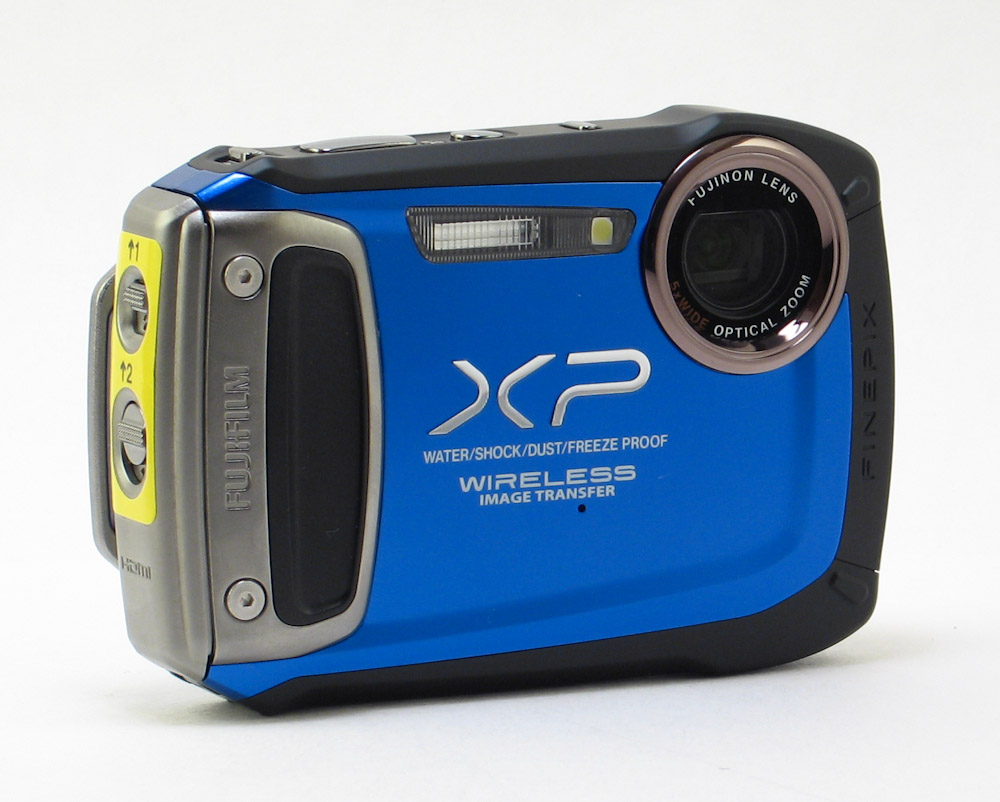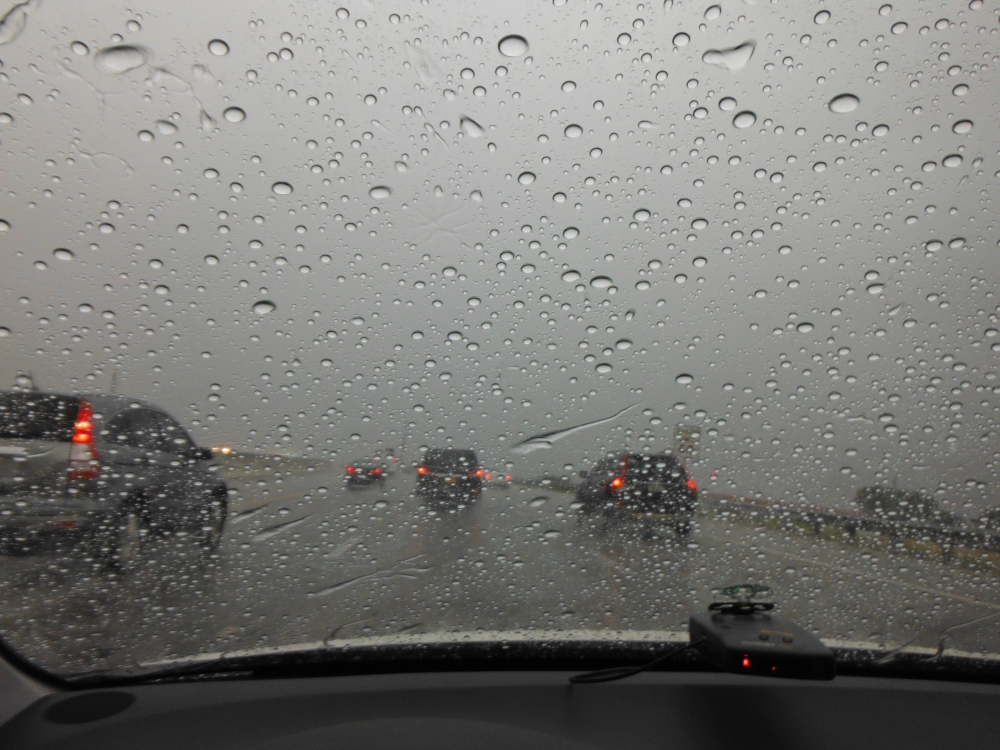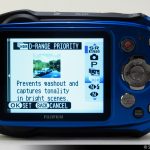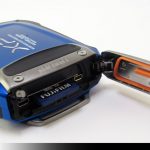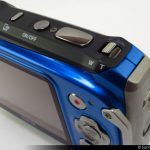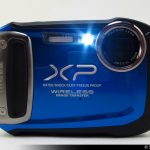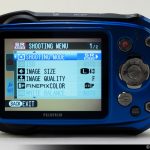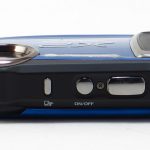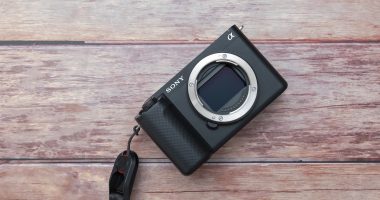If you’ve been keeping track, I’ve had a chance to look at a couple of rugged cameras already. In the past couple of months, I’ve been able to look at the PENTAX Optio WG-2 and the Panasonic Lumix DSC-TG20, both very fine rugged cameras with their own unique strengths. So far, I’ve found that rugged cameras do have their place in the world of photography and definitely do come in handy, especially in situations that would normally destroy a regular camera. With that said, this is the third rugged camera I’ve been able to look at and it also has the most features in the bunch. Where as the other two were pretty run of the mill cameras, this FujiFilm FinePix XP170 features the ability to transfer files wirelessly using it’s built in Wi-Fi. When paired up with the FujiFilm Photo Receiver app (Android/iOS), you’re able to transfer photos wirelessly to your smartphone so that you can upload them to your favorite social networks or edit them on your device. That feature alone makes the FujiFilm XP170 unique among its rugged camera peers.
Body & Design
If you haven’t already, please check out our initial hands-on preview of the FujiFilm XP170 here. It has a ton of information about the look and feel of the body as well as button placements, doors, and whatever else has to do with the exterior of the XP170. Most of the hands-on preview was done straight out of the box so what was said there may not always be the case after some real world use. That’s where this portion of the full review comes in. Here I’ll talk more about how the body and design of the camera was really like after a good amount of time using it.
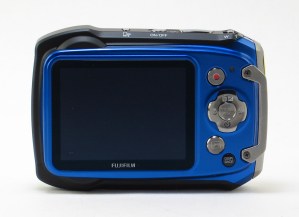 For starters, the FujiFilm XP170 is a much larger camera than the PENTAX WG-2 and the Lumix TG20. It’s mainly a bit thicker and much taller than the other two. This gives the camera very chubby proportions and it’s not quite as pocket friendly as the other two. It’s still pocketable, just not as comfortable when it’s in there. I prefer to throw it in my bag.
For starters, the FujiFilm XP170 is a much larger camera than the PENTAX WG-2 and the Lumix TG20. It’s mainly a bit thicker and much taller than the other two. This gives the camera very chubby proportions and it’s not quite as pocket friendly as the other two. It’s still pocketable, just not as comfortable when it’s in there. I prefer to throw it in my bag.
However, being larger also has its advantages. By far, the FujiFilm XP170 is the most comfortable rugged camera I’ve used so far when it comes to handling and just how it feels in your hands. It has a really nice, thick grip for your hands and the added girth gives it a nice, solid feel when you’re holding it. The added weight also helps in this department and is the heavier of the 3 cameras I’ve looked at.
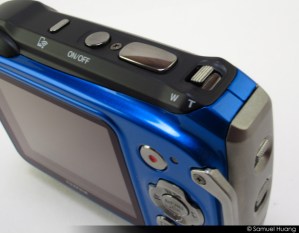 The XP170 also does something here that is completely different from the WG-2 and TS20. Instead of the zoom button that are controlled with your thumb, the XP170 has a finger switch up top that can be easily motioned left or right to zoom in or out. I find that this kind of zoom switch to be much more useful and easier to get too than having it located on the rear panel. Speaking of the rear panel, I really love how clear and laid out everything is back there with very large buttons that are easy to press.
The XP170 also does something here that is completely different from the WG-2 and TS20. Instead of the zoom button that are controlled with your thumb, the XP170 has a finger switch up top that can be easily motioned left or right to zoom in or out. I find that this kind of zoom switch to be much more useful and easier to get too than having it located on the rear panel. Speaking of the rear panel, I really love how clear and laid out everything is back there with very large buttons that are easy to press.
I also really like the huge strap bar on the side. You can either use the little wrist strap they give you or find a much larger strap and carabiner like on the WG-2.
Again, I really like that FujiFilm consolidated all the ports and the memory card slots into 1 opening which cuts down on the number of doors needed and means one less place for a possible water leak if you forget to lock something. This way, you only need to worry about 1 door and 2 locks, very similar to the TS20.
Operations & Features
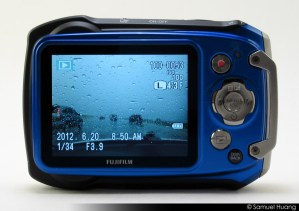 Right off the bat, I’m really impressed by how quickly the camera starts up. In less than a second, you are ready-to-shoot which makes this invaluable when you are trying to capture something that catches your eye quickly. I’ve had so many moments where I’ve missed shots because I had to wait for the camera to boot up and by then, the shot I wanted is gone. The XP170 does this in less than a second thanks in part to the fact that it completely skips the loading screen and goes straight into live view. The auto-focusing speed also plays a major factor when it comes to how quickly you can snap a photo and I can say that the FujiFilm XP170 is relatively quick in daylight. However, it does slow down quite a bit when shooting indoors or in low light situations which is usually the case however with all digital cameras.
Right off the bat, I’m really impressed by how quickly the camera starts up. In less than a second, you are ready-to-shoot which makes this invaluable when you are trying to capture something that catches your eye quickly. I’ve had so many moments where I’ve missed shots because I had to wait for the camera to boot up and by then, the shot I wanted is gone. The XP170 does this in less than a second thanks in part to the fact that it completely skips the loading screen and goes straight into live view. The auto-focusing speed also plays a major factor when it comes to how quickly you can snap a photo and I can say that the FujiFilm XP170 is relatively quick in daylight. However, it does slow down quite a bit when shooting indoors or in low light situations which is usually the case however with all digital cameras.
The menu system on this XP170 is just like it is on the FinePix F770EXR and HS30EXR. It’s very straight forward and easy to understand with very clear headings for each setting. On this camera, it’s a bit more simplified though than the previous 2 FujiFilm cameras with just 2 tabs you have to mess with. One tab is for settings used while shooting and the other tab is for camera settings in which there are 4 pages worth of settings. There are lots of pretty standard camera settings but a one of the more interesting ones on here that I found was the ability to completely turn off the operational and shutter sounds making it a stealthy shooter.
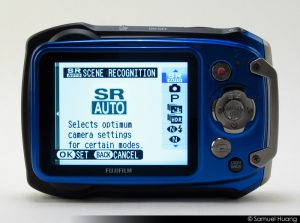 Shooting modes for the XP170 are pretty similar to the other FujiFilm cameras. There is the SR Auto mode which allows the camera to select optimum camera settings automatically as well as having it choose the correct scene mode automatically. Most people will want to keep it in this mode if they do not want to really mess with any of the settings and want the camera to handle it on its own. There is also a regular Auto mode but it’s not as advanced as the SR Auto mode. In regular Auto, the only thing it automatically adjusts for you is the ISO, white balance, aperture, and shutter speeds. It does not choose a scene mode to shoot with. If you want to get a bit more hands on with these settings, you’ll need to switch it to Program AE. In this mode, it’ll still automatically choose the aperture and shutter speed for you but at least in this mode, many of the options in the settings menu are no longer grayed out. You’ll be able to choose ISO level, white balance settings, and AF mode.
Shooting modes for the XP170 are pretty similar to the other FujiFilm cameras. There is the SR Auto mode which allows the camera to select optimum camera settings automatically as well as having it choose the correct scene mode automatically. Most people will want to keep it in this mode if they do not want to really mess with any of the settings and want the camera to handle it on its own. There is also a regular Auto mode but it’s not as advanced as the SR Auto mode. In regular Auto, the only thing it automatically adjusts for you is the ISO, white balance, aperture, and shutter speeds. It does not choose a scene mode to shoot with. If you want to get a bit more hands on with these settings, you’ll need to switch it to Program AE. In this mode, it’ll still automatically choose the aperture and shutter speed for you but at least in this mode, many of the options in the settings menu are no longer grayed out. You’ll be able to choose ISO level, white balance settings, and AF mode.
 Aside from those 3 modes, you also get a whole bunch of separate scene modes to choose from manually as well as an HDR mode and a Pro Low-Light mode. HDR mode obviously is to capture a complete range of tones to prevent washout. This is something I’ve seen a lot of cameras include now as a selection. In Pro Low-Light, the camera attempts to keep objects clear when shooting in low light, which can be a challenge if you aren’t using a flash. One other mode that I found really interesting on here that I have never seen before on another camera is Natural & Flash mode. In this mode, the XP170 takes 2 images back to back, one without the flash and one with the flash. I actually find this mode quite useful, especially when indoors because there are times when you really don’t know which to choose, flash or no flash. Sometimes images come out better with, sometimes without. If you set it to this mode, you can shoot an scene in both modes and then choose the one you like best later. It’s pretty genius in my opinion.
Aside from those 3 modes, you also get a whole bunch of separate scene modes to choose from manually as well as an HDR mode and a Pro Low-Light mode. HDR mode obviously is to capture a complete range of tones to prevent washout. This is something I’ve seen a lot of cameras include now as a selection. In Pro Low-Light, the camera attempts to keep objects clear when shooting in low light, which can be a challenge if you aren’t using a flash. One other mode that I found really interesting on here that I have never seen before on another camera is Natural & Flash mode. In this mode, the XP170 takes 2 images back to back, one without the flash and one with the flash. I actually find this mode quite useful, especially when indoors because there are times when you really don’t know which to choose, flash or no flash. Sometimes images come out better with, sometimes without. If you set it to this mode, you can shoot an scene in both modes and then choose the one you like best later. It’s pretty genius in my opinion.
 The last little feature that I found really neat was the ability to turn on the little LED Illuminator light full time. The XP170 doesn’t have a standard AF-assist light that comes on when you are focusing. Instead, you have to manually turn on the LED light for dimly lit settings. In my opinion, it works pretty well and in fact, using the LED light can have the secondary function of allowing you to see in the dark, something you can’t do with a regular camera. This also helps when you’re taking underwater photos where there is very little light available.
The last little feature that I found really neat was the ability to turn on the little LED Illuminator light full time. The XP170 doesn’t have a standard AF-assist light that comes on when you are focusing. Instead, you have to manually turn on the LED light for dimly lit settings. In my opinion, it works pretty well and in fact, using the LED light can have the secondary function of allowing you to see in the dark, something you can’t do with a regular camera. This also helps when you’re taking underwater photos where there is very little light available.
Now, I don’t usually talk about movie mode that much with cameras like these as I honestly don’t take video with point and shoots, but on the XP170, there is a really interesting feature included in movie mode. Not only are you able to take full HD video at 30fps, you can also take slow motion video at 80, 160, and 240fps. However, you can not do this in full HD though and you’ll be limited to 640×480 @ 80fps and 320×240 @ 160/240fps. Yes, the resolution for these 3 aren’t that exciting at all but it’s still a cool feature to use.
Wi-Fi Image Transfer
 I put this in it’s own section because it’s one of the really unique features that sets it apart from the other rugged cameras I’ve used. In order to really make the most of this feature, you’ll need a smartphone that supports the FujiFilm Photo Receiver app. Luckily, my iPhone works for this and it’s a free download in the App Store. On the camera, you don’t really need to do much to set this up. The Wi-Fi only comes on when you press the Wi-Fi transfer button on top and the only real option you need consider is whether or not you want the camera to resize your images for transfer for transfer them at full resolution.
I put this in it’s own section because it’s one of the really unique features that sets it apart from the other rugged cameras I’ve used. In order to really make the most of this feature, you’ll need a smartphone that supports the FujiFilm Photo Receiver app. Luckily, my iPhone works for this and it’s a free download in the App Store. On the camera, you don’t really need to do much to set this up. The Wi-Fi only comes on when you press the Wi-Fi transfer button on top and the only real option you need consider is whether or not you want the camera to resize your images for transfer for transfer them at full resolution.
In playback mode, press the Wi-Fi button up top. A screen will appear that says it is searching for a compatible device to connect too. On your iPhone, go into your Wi-Fi Network settings and choose FUJIFILM-XP170 as your network to make a connection to the camera. Exit this and launch the FujiFIlm Photo Receiver app. Once the app launches, tap the green connect button while also pressing the Wi-Fi connect button again on the camera. Once both your camera and iPhone are connected, you can begin transferring files from the camera. Just tap “ok” on the camera to transmit. Repeat for each photo you want to send. I won’t go too much into the app, but you can also directly upload to Facebook or Twitter. Overall, a painless process and a very simple app to use.
Image Quality
Since this is basically a point-and-shoot camera, I won’t go too in-depth like I do on some of the more advanced cameras where you buy them because you want quality you can see at the pixel level. This isn’t that type of camera. This is for those who want something fun to use and want something reliable to capture their memories with and don’t care if there is a little noise here and there. With that said, the FujiFilm FinePix XP170 is an excellent camera that can take some very good photos with very little noise.
Like with most point and shoots, photo quality on indoor and low light shots suffer a bit due to use of higher ISO levels. This is to be expected however and in all honestly, with the XP170, it’s not really that bad in comparison to others. Colors however do get a bit muddled and there is a bit of loss in detail, but for the most part, still very usable. There’s less detail loss if you use the flash indoors which I actually do recommend with point and shoots, even though I am usually the type never to use a flash. When it comes to point and shoot cameras, you almost always have to use a flash other wise you most likely will not get the kind of shots you want.
Outdoors though is where the XP170 excels and outdoors is where I would recommend using this camera most. The photos come out nice and bright with lots of details. Even taking a photo from inside my car yielded good photos, as long as there was enough lighting.
Overall, very acceptable photos from the XP170. Again, when it comes to point and shoot cameras, I don’t expect them produce photos on par with a DSLR or mirrorless camera. My expectations from them are set lower because I know what their limitations are. Cameras like this have their place and honestly, there are situations where you just don’t want to lug around a bigger camera. It does what it says it does and even though I hav seen other point and shoots that produce better quality shots, the ruggedness and versatility of the XP170 are huge features to take into consideration as well.
Final Thoughts
 I’ve never really used FujiFilm cameras until earlier this year. For the most part, I’ve always been a fan of Canon point and shoots and for the most part, that’s pretty much all I ever really owned. However, this year, I’ve already used 3 different FujiFilm cameras and you know what? I’ve really been impressed with them to the point where I would probably choose any one of the three FujiFilm cameras I’ve used over a comparable Canon. They are easy to use, have very intuitive menu systems, and the overall image quality has been very good.
I’ve never really used FujiFilm cameras until earlier this year. For the most part, I’ve always been a fan of Canon point and shoots and for the most part, that’s pretty much all I ever really owned. However, this year, I’ve already used 3 different FujiFilm cameras and you know what? I’ve really been impressed with them to the point where I would probably choose any one of the three FujiFilm cameras I’ve used over a comparable Canon. They are easy to use, have very intuitive menu systems, and the overall image quality has been very good.
As for the XP170, this isn’t the most powerful FujiFilm camera I’ve used, but it is he toughest and the image quality on it I would say is much better than the Lumix TS20 I looked at last week. It’s about on par with the PENTAX WG-2 but a much speedier shooter and also has more modes. Based on everything I’ve seen with the FujiFilm XP170 and the other compatible cameras I’ve used in the past, I’m going to say that the XP170 would probably be my favorite to use, though not my favorite in the looks department. The PENTAX WG-2 still looks the coolest in my opinion with it’s Ironman looks. However, looks aren’t everything and in the end, I think feature set and functionality win when it comes to cameras. The XP170 has every major feature you’d want in a point and shoot with a rugged body too boot. The only thing missing from the camera is RAW shooting, which most people with point and shoots don’t use anyways, and the ability to manually set aperture and shutter speed. Again, it’s another feature that most normal users of point and shoots don’t use.
Overall, a very solid camera for those looking for a rugged camera that can do just about everything. It may be larger than the other cameras, but in my opinion, it’s the most comfortable to use and easiest to handle. In my opinion, you can’t go wrong buying the XP170 if you’re looking for an all around, great rugged camera.

